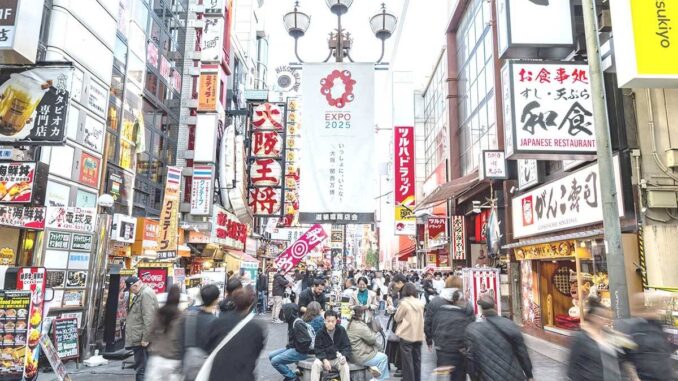
TOKYO — Japan’s minority government was set on Friday to sign off on a $140-billion stimulus drive aimed at putting more money in consumers’ pockets after the ruling party’s worst election result in 15 years.
The Oct. 27 contest saw voters — angry over corruption in the Liberal Democratic Party and inflation — deprive new Prime Minister Shigeru Ishiba’s coalition of a majority in parliament’s lower house.
Chief government spokesman Yoshimasa Hayashi said Friday that the package — reportedly worth 21.9 trillion yen ($141.8 billion) — would be approved by Ishiba’s Cabinet later in the day.
“The package will have business impacts worth around 39 trillion yen and additional general account spending, which provides backing for the package, will be 13.9 trillion yen,” Hayashi said.
“We aim to emerge out of the cost-cut style economy and transfer into the high added value creation economy,” he told reporters.
It includes energy and fuel subsidies, and cash handouts up to 30,000 yen ($194) to low-income households in the world’s fourth-biggest economy, according to the media.
To pay for the package, the second in as many years, the government will table a supplementary budget by the end of the year in the lower house.
To win enough lawmakers’ support, Ishiba agreed to include the lifting of an income tax threshold pushed by the opposition Democratic Party for the People.
The smaller party says this will ease labor shortages and boost consumer spending by encouraging part-time staff to work longer hours and earn more.
But critics worry that this will reduce tax revenues by trillions of yen and increase Japan’s huge debt pile, which equates to more than 200 percent of gross domestic product.
The strain on Japan’s public finances is set to grow with the number of pensioners rising, and the number of people working and paying into state coffers projected to decline.
‘Quiet emergency’
With the Bank of Japan expected to keep hiking interest rates, this debt mountain will also cost more and more, SMBC Nikko Securities economist Yoshimasa Maruyama said.
Tax cuts “must be accompanied by a permanent source of revenue to fill the gap,” Maruyama wrote in a research note.
Ishiba, 67, has promised to revitalize depressed rural regions and to address the “quiet emergency” of Japan’s shrinking population with measures to support families such as flexible working hours.
Going forward, businesses worry that the need to curry favor with opposition parties means Ishiba will avoid reforms needed to improve Japan’s competitiveness.
There are also concerns that the government may pressure the Bank of Japan to go slow on raising interest rates, even if this leads to a weaker yen.
Government data on Friday put headline inflation last month at a modest 2.3 percent, but it showed rice up nearly 60 percent year on year, revealing the pain for ordinary Japanese.
The price of the staple rocketed because of hot weather and water shortages, and after a “megaquake” warning in August led to hoarding. Record inflows of hungry tourists were also blamed.
Separately, Ishiba has promised to spend 10 trillion yen through 2030 to boost Japan’s semiconductor and artificial intelligence sectors, and help the nation regain its tech edge.
The new stimulus package may include plans for the government to buy a 200-billion-yen stake in next-generation chip venture Rapidus, according to media reports.
After dominating tech in the 1980s, “Japan had a quite a long period of almost just sitting back and observing a lot of this innovation, particularly when it comes to artificial intelligence,” said Kelly Forbes at the AI Asia Pacific Institute.
“What we have seen in the last maybe two to three years is Japan really waking up to the potential” of such developments, she told Agence France-Presse (AFP).


Be the first to comment